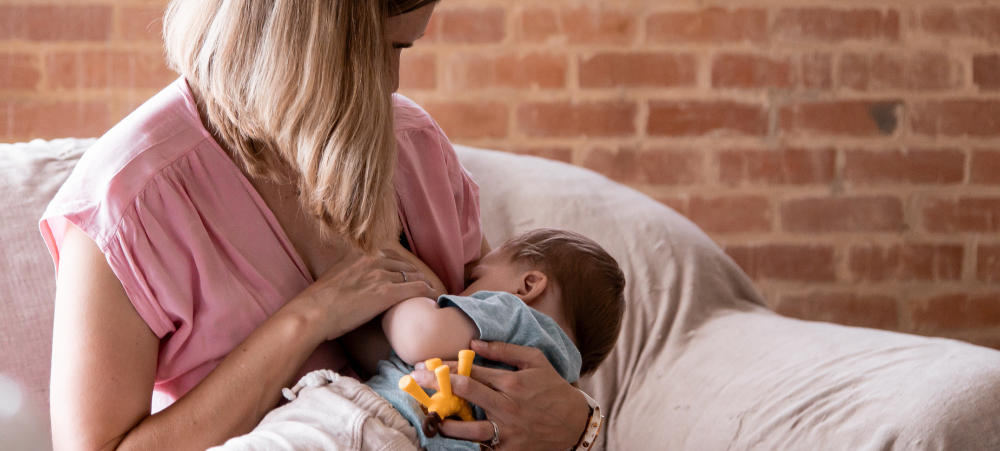There are many reasons as to why a mother may decide to restart breast feeding. This can be true for mother that had a good milk supply or mother that were barely able to produce milk can find herself in a situation there she needs to increase her milk supply. It may surprise you that even a post-menopausal woman can relactate successfully. Relactation requires time, patience, determination, and a co-operative baby Yes, it is possible to be able to relactate and produce enough milk to breastfeed you infant exclusively, while some mothers may still need assistance with supplementation. Younger infants tend to be more willing to suckle than older infants, but there are reports of children over a year old who have been breastfed after relactation.
Relactation may take several days (can be up to 2 weeks or longer) for the milk to start coming in and possibly a few weeks before she is able to meet the full nutritional needs of her baby with breast milk (2 to 6 weeks).
How to get your milk supply started.
Follow the tips below to help you get your milk to “come in” and to boost your milk supply.
- Skin to skin helps to stimulate the release of the hormone Prolactin. Prolactin is especially important for the production of breast milk. Skin to Skin is when you have your baby naked except for a nappy. You place your baby directly on to your chest (no bra or any clothing should be between you and your baby. You can put a blanket over your babies back.
- Try to latch your baby to your breast. It is important that you get a good deep latch to help you remove milk effectively. Remember to be patient and not to force your baby to the breast.
- Stimulate your breast at least 10 to 14 times in 24hours, you can use hand expression, a breast pump of your baby. Each stimulation should last 20 to 30 minutes. It is important that you also stimulate the breast at night as this is when your bodies prolactin levels are highest.
- Before you offer your breast to your baby or start expression. Encourage your milk to start flowing by using massage and heat. Circular motions towards the nipple stimulate the breast to make milk. Use heat to during message to help you with your let down reflex. You can use a warm bean bag, hot water bottle or warm water in a tightly closed bottle.
- You may need to use a breastmilk supplementer. This is a device that helps you to provide extra milk to your baby while you are direct feeding. It has a container that you can put expressed breast milk into that has a fine tube that carries the milk from the contain to your nipple. It allows your baby to stimulate your breast while also getting milk form the container. This helps to encourage your baby to suckle. Please contact a lactation consult to assist you with this process.
- Some mothers may need specific medications that can assist them with increasing their supply. This process needs to be done under supervision of a doctor that has experience in relactation.
• Supplementing while breastfeeding. A helpful method of re-establishing or inducing lactation is to feed the BMS to the infant while he/she is suckling. In this way the infant’s efforts are rewarded, and the infant’s suckling stimulates the production of milk. This method is useful if an infant is not interested or is too weak to suckle from a breast that does not produce milk yet. The supplement used can be artificial milk, pasteurised donated breastmilk or preferably the mother’s own expressed milk (if she is producing any). The supplement can be put into the side of the infant’s mouth using a syringe or dropper while the infant is suckling, it can be dripped onto the mother’s breast so that it goes into the infant’s mouth while the infant suckles, or, if cleanliness and sterilisation can be assured, then a “breastfeeding supplementer” can be used. This consists of a cup or bottle of supplement, with a fine tube which leads from the bottom of the container, along the length of the mother’s nipple (at the top or side) and into the infant’s mouth.
Reference:
Infant Feeding in Emergencies: Policy, Strategy and Practice (WHO; 1999; 41 pages)
Annex VIII: Re-lactation, Hand Expression and Cup Feeding
http://helid.digicollection.org/en/d/Js13434e/5.8.html#Js13434e.5.8
https://www.breastfeeding.asn.au/bfinfo/relactation-and-induced-lactation
- How long should a mother breastfeed for - May 15, 2023
- NICU and Milk supply - May 11, 2023
- Loadshedding and Breast milk - April 4, 2023





